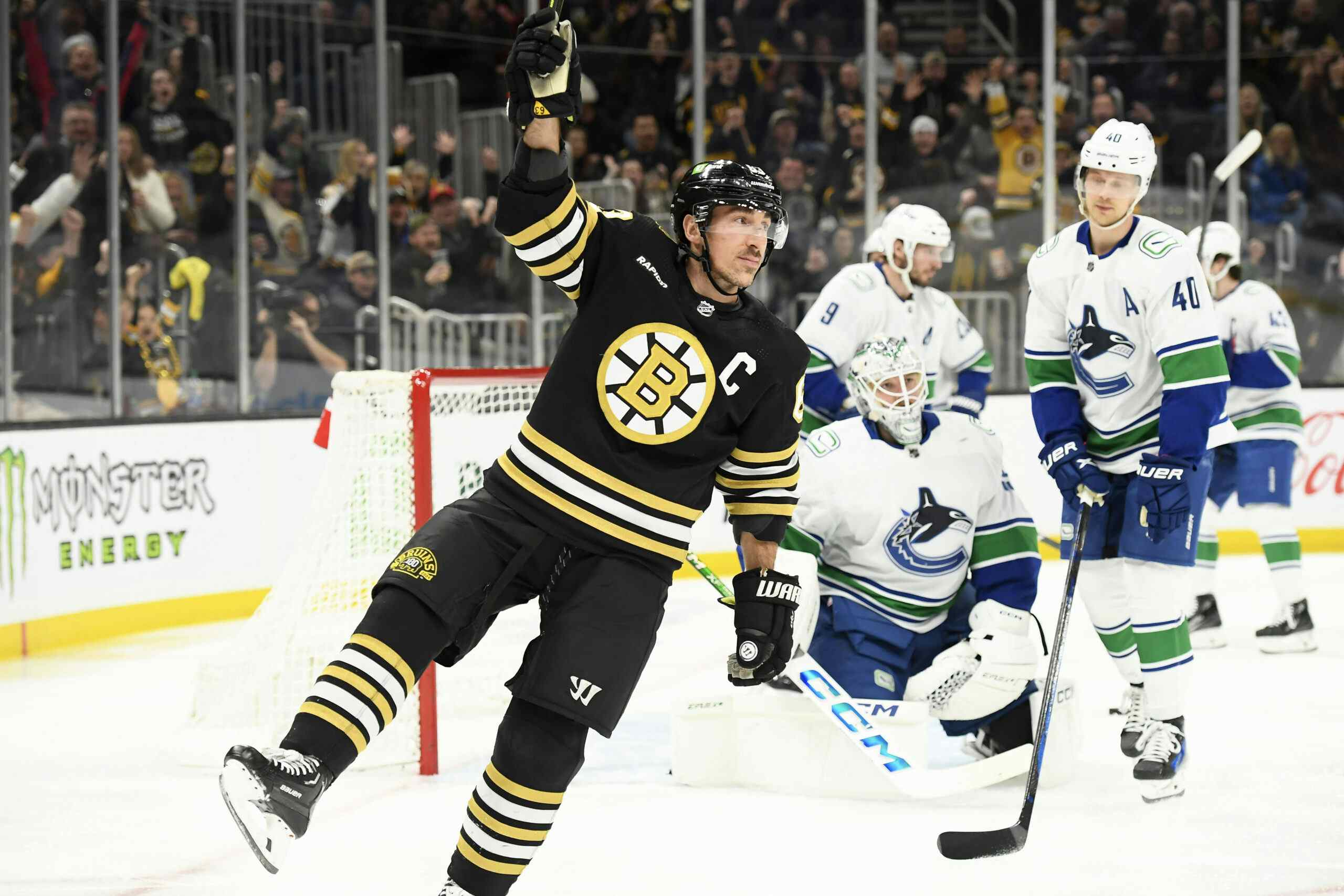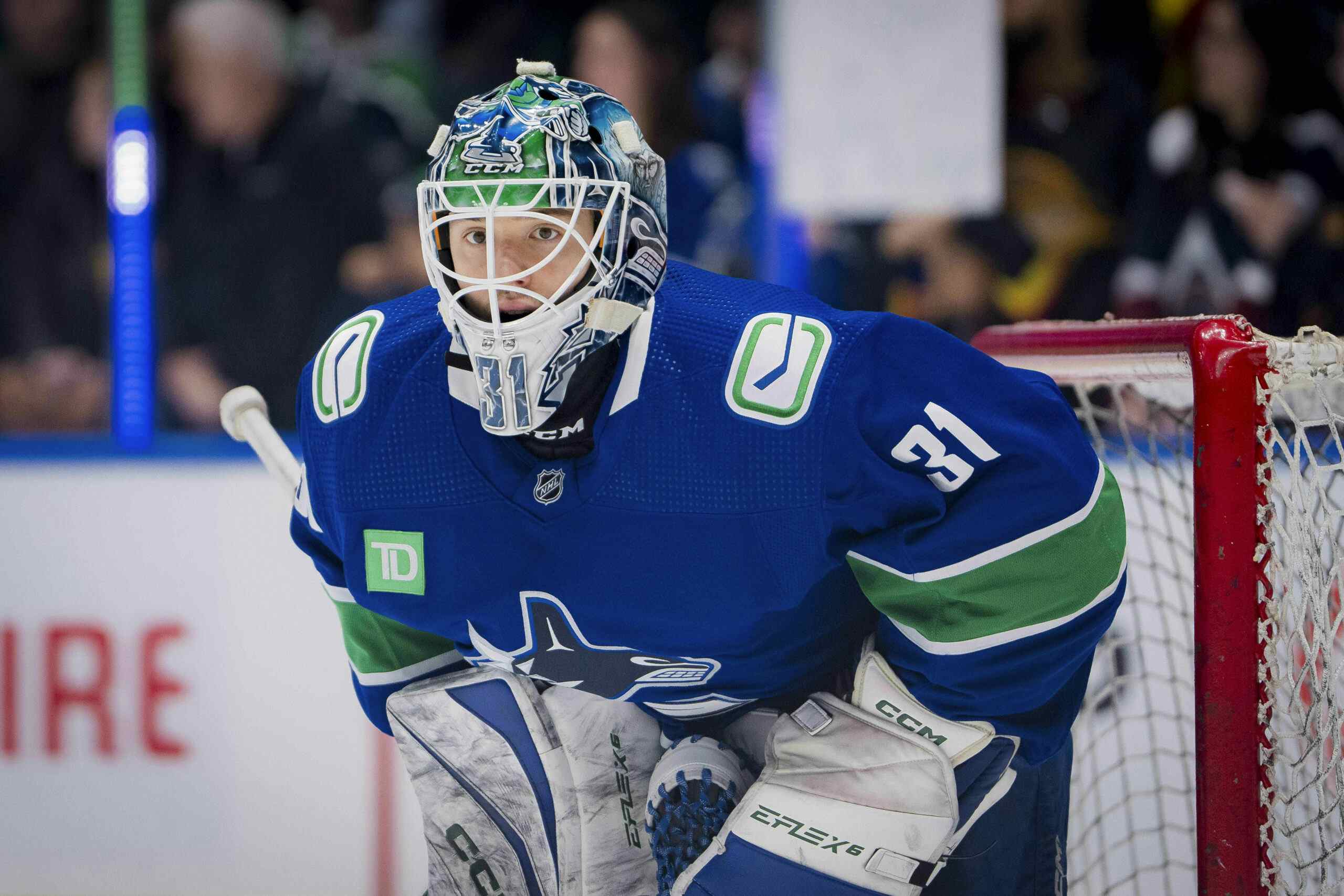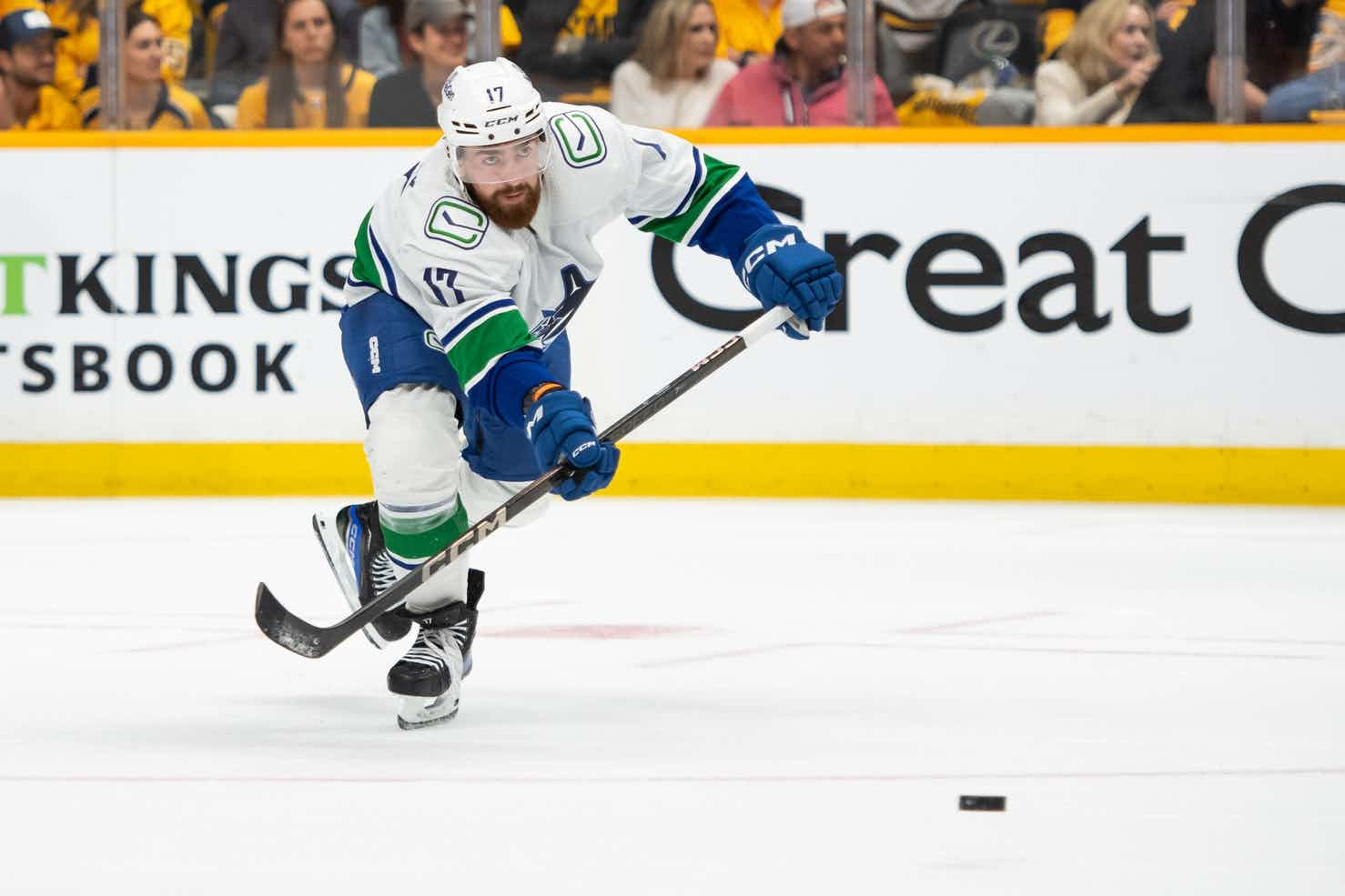If you’re surprised by Troy Stecher, then you haven’t been paying attention
7 years ago
Here we are, one pre-season game removed from the regular season and NCAA UFA signee Troy Stecher remains a Vancouver Canuck. Everyone is abuzz with Stecher-mania, citing the improbability of his success to this point in Canucks camp. He’s even drawing the occasional Ben Hutton comparison.
Which brought me to this most salient and timely article idea. Following in the since-hired Josh Weissbock’s footsteps, I’m going to follow the breadcrumbs to find the plentiful indicators that Stecher’s success is no aberation, in much the same way he did with Hutton a year ago.
So, with that in mind, let’s dive headlong into these indicators, statistical and qualitative alike.
Quality of Competition
Ryan Stimson over at Hockey Graphs has done some fantastic work over the past few months, which includes predicting and breaking down QoT and QoC in the NCAA. This allows us to have better insight into what is happening.

| Def QoC | Fwd Qoc | |
| Avg Min | 18.917 | 17.914 |
Based on the Ice-Time QoC metrics provided by Stimson, Stecher drew the toughest assignments among North Dakota defencemen. Stecher’s usual defensive partner, Paul LaDue faced stiffer defensive competition, but generally had an easier go of the opposition’s forwards.
The data for the entire NCAA is available, but when you plot it all, Stecher gets lost in the upper part of the bubble. He is on the edge of the bubble as facing some of the toughest competition but gets lost in the mix.
If you look at the QoT for Stecher, he ranks highest amongst defenceman for North Dakota, simply because he was out there with Brock Boeser, Nick Schmaltz and Drake Caggiula so much. That line, along with the defence pairing of Stecher and LaDue dominated the NCAA throughout the majority of the year.
Offensive numbers
As Weissbock so rightly pointed out in his Hutton article from a year prior, shot rates are a good indicator of player performance. Goals can be hard to come by, so there’s no shame in leaning on the timeless adage about good things happening when you put the puck on net. Stecher finished last season ranked 10th in shots-per-game among NCAA defencemen, with 2.6. That number puts Stecher in the top two percent of defencemen with at least ten games to their credit.
Stecher finished the NCAA season with eight goals, tied for 13th amongst defencemen, but due to UND making the finals, his G/PG of 0.19 drops him down to 24th amongst his defensive peers. His 21 assists had him tied for 11th amongst that same group.
Jeremy Davis did a great job breaking down how UND ranked amongst the NCAA shortly after the Canucks signed Stecher.
Although Stecher didn’t lead the NCAA in points, or SOG amongst defenceman, he was hovering around the elite talent throughout the entire season.
Graduation Rates & pGPS
In the piece about Hutton, Josh breaks down how NCAA graduation rates look after each year.
Applying that same information to Stecher is simple enough. Stecher is entering his 22-year-old season, which is an excellent time to break through to the NHL. If Stecher hasn’t had a sniff of NHL action by his age 23-season, his probability of success drops off dramatically. That just reiterates a point I made earlier. If he doesn’t make the team out of camp, suiting up at any point this season bodes well for his long-term success.
Using pGPS, 6.2% of Stecher’s statistically similar players of his age group and size developed into NHL regulars. Stecher’s slight stature and unspectacular production work against him in this context, hence the lower percentage of successful comparable players.
Quantitative Analysis
I’ve written a few times about Stecher from a scouting perspective, including the prospect profile this summer. What always stuck out to me, was Stecher’s ability to move with the puck and create space. Not only does that show his patience, it illustrates his skating abilities, offensive awareness, and passing abilities. That was clearly demonstrated on this pre-season goal:
Stecher also rarely puts himself in a bad position defensively.
These are just indicators of his hockey IQ and his ability to think the game. He was on TSN 1040 on Wednesday afternoon, and explained his side of it all. He sounds like a smart kid, who is striving to be better every day and has the awareness to know what he needs to work on to succeed.
He has won in the BCHL and NCAA, which is something that teams fawn over as something that can’t be taught.
This isn’t the part where a lot needs to be said, as what he has done on the ice is exactly why everyone is excited about him. But the signs were there before in the NCAA.
The odds are always stacked against prospects, and that is the case with Stecher. But like Hutton, there has been evidence through quantitive and qualitative data to suggest Stecher could buck the odds and develop into something.
He has always been criticized for his size but overcome that at every level. He has shown in the pre-season that he can be effective posting an extremely impressive 67.9% CF% during his three pre-season contests. Yes, it’s preseason. But those are ridiculously good numbers.
Credit to Jim Benning for signing an undrafted free agent — although it’s worth noting that Stecher wanted to be a part of the Canucks due to local ties and realizing there was an opportunity to securing a roster spot quickly. It was just simply a matter of working out the details.
Ultimately Stecher may not make the starting roster, but don’t be surprised to see him soon in Vancouver. He will be right under everyone’s noses, just like he was playing with the Canucks top prospect Brock Boeser in North Dakota.
Canucks Army and Auto Canada want to give you a $10,000 NHL experience for four in Las Vegas! Enter your fantasy hockey team for FREE at nationdrafts.com and compete against readers across the Nation Network for your chance to win. Just pick your players from each draft box and make weekly trades to better your chances. Enter your team now at nationdrafts.com.





